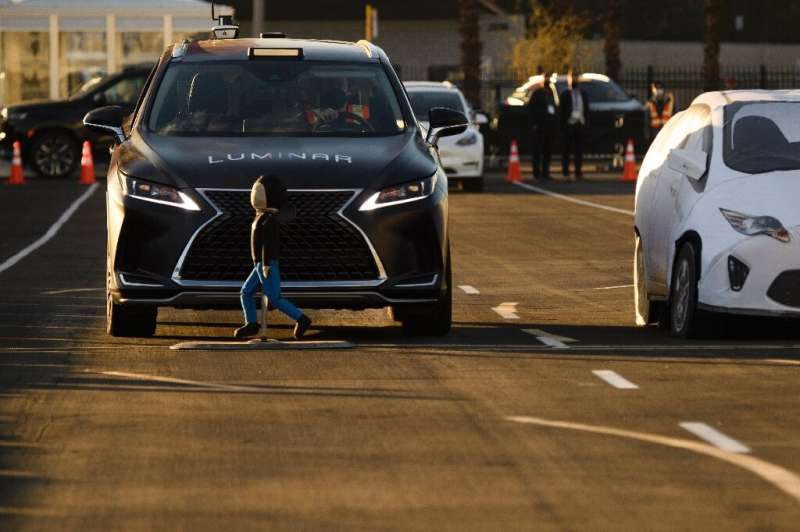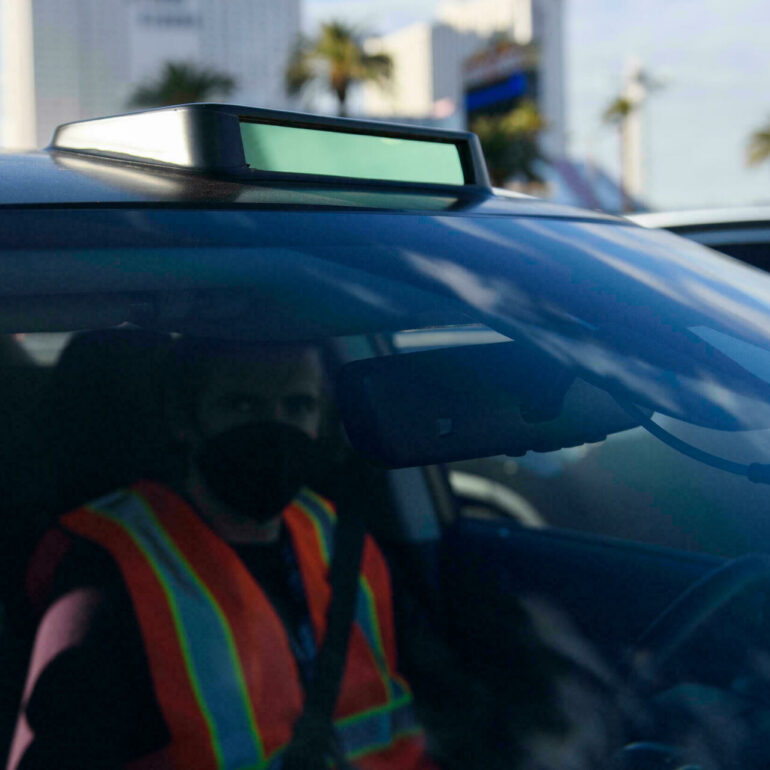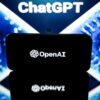As it pursues the goal of fully autonomous driving, Tesla has bet entirely on cameras and artificial intelligence, shunning other commonly used tools such as laser detection.
Tesla Chief Executive Elon Musk has touted a system built around eight “surround” cameras that feed data into the auto’s “deep neural network,” according to Tesla’s website.
But as with so many other things involving Tesla, there is controversy.
At the giant Consumer Electronic Show (CES) in Las Vegas, Luminar Technologies has set up a demonstration of two autos moving at about 30 miles per-hour towards the silhouette of a child.
A car utilizing Luminar’s lidar, a laser-based system, stops in advance of trouble, while its rival, a Tesla, careens into the mannequin.
Lumar’s experiment, which was not verified by an outside expert, was intended as a “side-by-side comparison” to let people “really evaluate the difference,” Luminar’s Aaron Jefferson told AFP.
“In perfect driving conditions, the right sunny day, cameras can do a lot,” Jefferson said. “The problem comes in with those corner cases,” where visibility can be impeded by fog, sunset lighting or objects like a stray plastic bag.
Many companies working in the autonomous transportation space agree with Luminar and are focusing on technologies that combine cameras with other systems such as lidars, radars based on radio waves, or sometimes both.
But Tesla—whose cars currently offer driver-assistance systems well short of full autonomy—has adopted a different approach under the iconoclastic Musk.
Musk’s method is to take real-time readings from a camera that is fed into an artificial intelligence system built around data collected over the years by Tesla sensors.
“The bet that Tesla made, essentially, is that by collecting a lot of data, they can then train the algorithm,” said Kilian Weinberger, a Cornell University computer scientist.
Musk’s view is that his system can be “as good as an algorithm that actually uses all these expensive sensors that have a lot less data,” said Weinberger, who called Tesla’s approach “a pretty reasonable strategy.”

A vehicle with Luminar’s lidar-based Proactive Safety pre-collision braking crash avoidance sensors stops to avoid a child-sized test dummy at the Consumer Electronics Show in Las Vegas.
Has technology ‘plateaued?’
While automakers have added systems to assist with braking, parking and other functions, achieving full autonomy has proven difficult.
Autonomous driving systems are built around four functions, according to Sam Abuelsamid of Guidehouse Insights, a market intelligence firm: perceive the environment in real-time, predict what will happen next, plan the car’s next move and then execute it.
“It turns out the prediction is much, much harder than anybody anticipated, particularly for pedestrians and cyclists,” Abuelsamid said, adding that the progress of software built only around cameras “has somewhat plateaued.”
“Elon Musk sold the story of full self-driving based on the hardware that they had,” he said. “They painted themselves into a corner… because they’ve already sold the system to hundreds of thousands of customers.”
Other skeptics of Tesla’s approach include Jacques Aschenbroich, chief executive of French automotive supplier Valeo, which presented its latest lidar technology at CES.
“Even with plenty of data, cameras are not enough,” said Aschenbroich, who views sensors as especially important in urban areas or other spots where car traffic and pedestrians can be unpredictable.
“We firmly believe lidars are essential” for reaching further levels of autonomy, he said.
“All the sensors have strengths and weaknesses,” said Marko Bertogna, a professor at the University of Modena who is part of a team participating in an autonomous car race at CES.
Bertogna believes regulators are more likely to accept autonomous systems built around redundancy.
“The current state of the art is that there are still too many problems for a system relying on camera only to be safely validated,” he said.
2022 AFP
Citation:
Tesla’s cameras-only autonomous system stirs controversy (2022, January 6)



